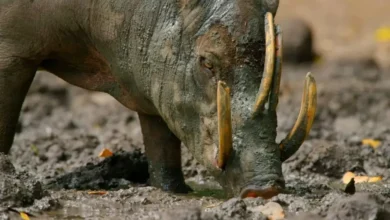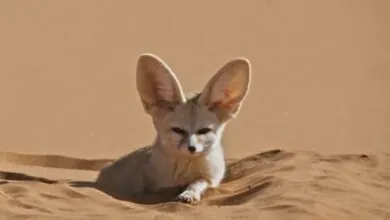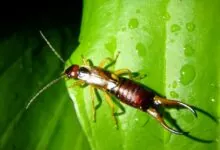Step into Their World: An Immersive Journey Through Giraffe Habitat
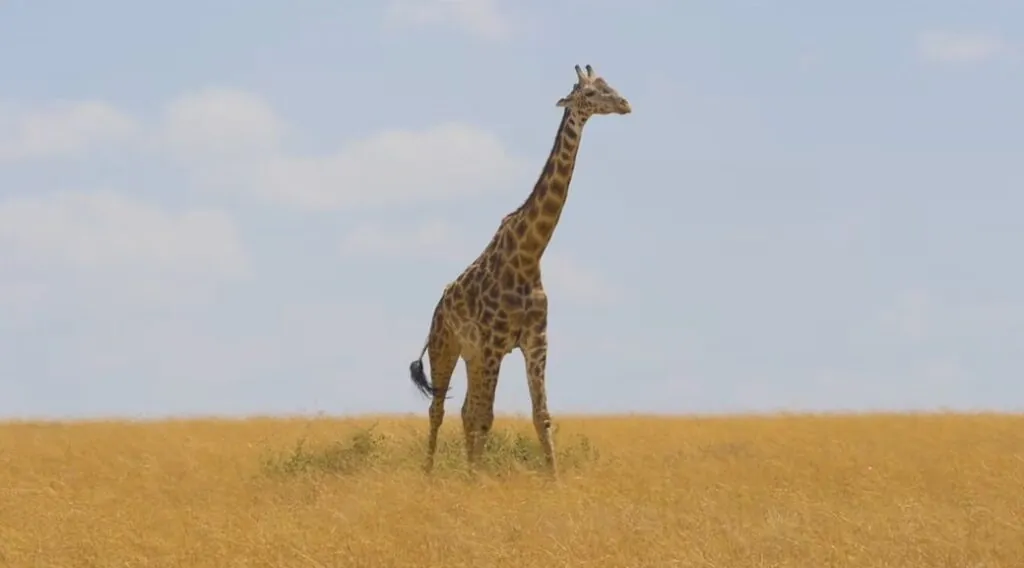
Envision yourself on safari – grazing across the stretched savanna. Suddenly, a towering figure breaches the horizon – a giraffe, scientifically known as Giraffa Camelopardalis. Its long neck extends above the acacia trees, its patterned coat blends seamlessly with the sun-dappled leaves. Giraffe, the tallest land mammal on Earth, embodies an air of mystery and wonder. Beyond its appearance, the giraffe habitat has the charms worth-unfolding. Join me on this journey to unveil the secrets of the giraffe’ life.
| Kingdom | Phylum | Class | Order | Family | Genus | Scientific Name | |
| Animalia | Chordata | Mammalia | Artiodactyla | Giraffidae | Giraffa | Giraffa camelopardalis |
Origin and Evolution
Evolutionary History
Ancestral giraffes, identical to a mix of okapi and deer, branched into distinct lineages around 7 to 8 million years back. “Bohlinia,” a close relative with a long neck, migrated to Asia – later becoming extinct about 5 million years ago. Modern giraffe species surfaced in eastern Africa. It diversified into the 9 recognized subspecies we see today.
What is more intriguing when it comes to the giraffe evolution is the fact that despite its towering height, the closest living relative to the giraffe is the much smaller and solitary okapi.
Genetic Composition and Diversity
Genetically, giraffes have 31 chromosome pairs, similar to humans. Albeit genetic variations, all subspecies can interbreed. Reticulated, blotched and heart-shaped patterns provide them camouflage in their environment. It’s the tallest living animal in the world, reaching up to 19 feet tall, while the Angolan giraffe is slightly smaller.
Environmental Adaptations
Speaking of the giraffe’s adaptations, particularly the environmental ones, it reaches leaves unavailable to other herbivores. Its strong heart pumps blood against gravity to deliver oxygen to the brain. In addition, its swollen jugular vein functions as pressure valve, preventing fainting when bending down to drink.
Distribution and Population
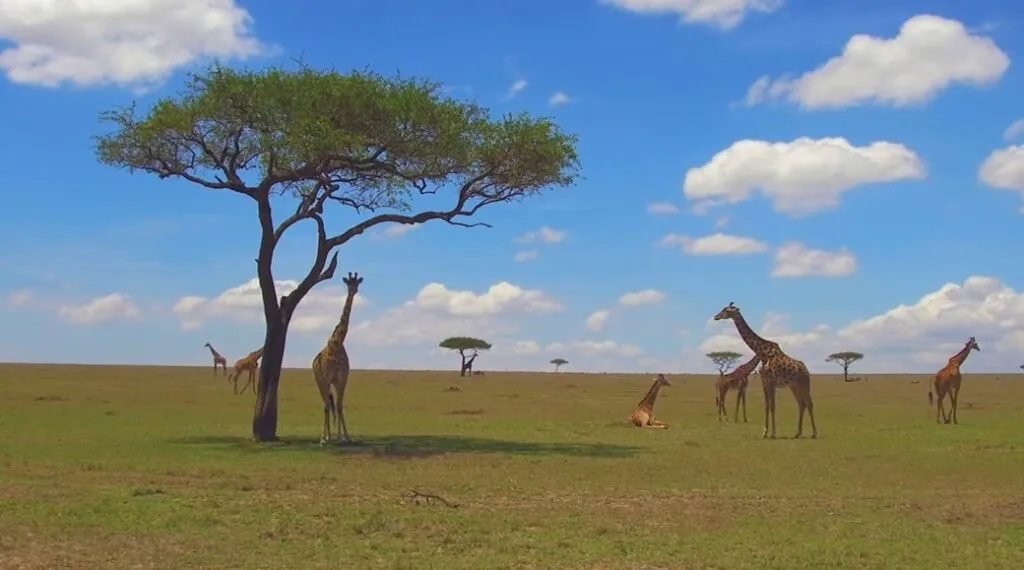
Geographic Range
In the annals of time, giraffes roamed across sub-Saharan Africa and North Africa. Concerning the giraffe distribution in this day and age, they primarily exist in scattered populations across savannas, woodlands and acacia-dominated ecosystems in southern Africa. They can be found with smaller pockets in central and east Africa.
Population Dynamics
Contemporary estimates place the total giraffe population around 100,000 individuals – down from over 150,000 just a few decades back. Regrettably, giraffe populations are face a downturn across most of their range.
Geography
| Continents | Africa |
| Countries | Numerous including Angola, Botswana, Burkina Faso, Burundi, Cameroon |
| Bio-geographical Realms | Afrotropical |
| Biome | Savanna, Woodland, Grassland |
| Climate Zones | Tropical savanna, Tropical dry forest, Subtropical desert |
Giraffe Habitat
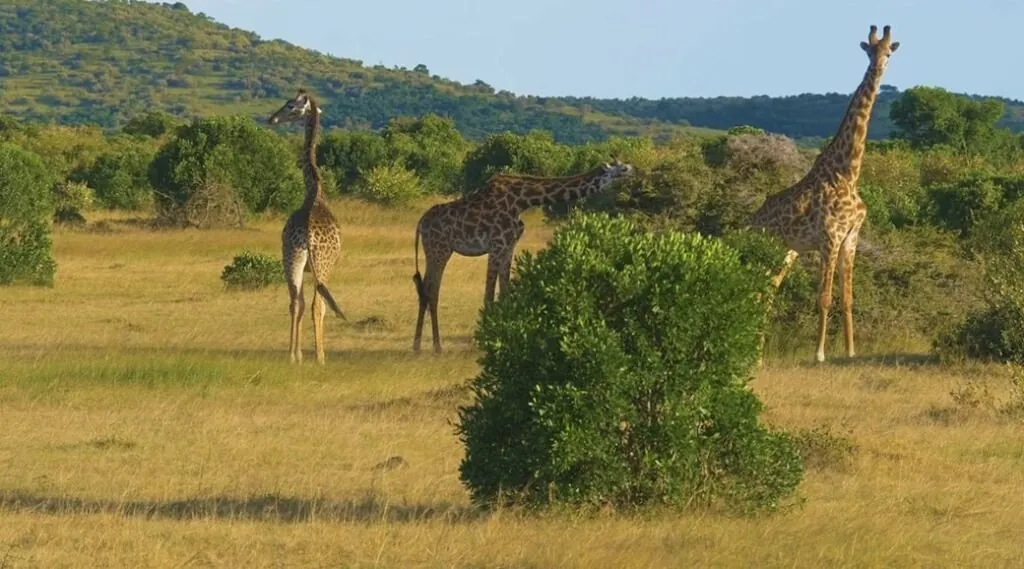
Habitat Preferences
The giraffe habitat can be sectioned into three slots:
Savannas: It falls under their preferred ecosystems. Open grasslands provide abundant and diverse vegetation, expressly acacia trees – their chief food source. The Masai giraffe prioritizes these open spaces.
Woodlands: Dense woodlands like Acacia woodlands in southern Africa offer shade and shelter in giraffe habitat. The Angolan giraffe thrives in these areas.
Acacia-dominated Ecosystems: These provide highly nutritious leaves readily accessible with their long necks. The e reticulated giraffe, with its net-like pattern, mixes seamlessly in these habitats.
In addition to the aforementioned giraffe habitat preferences, there’re microhabitats they like to thrive in. They favor taller trees like Acacia tortills and Acacia drepanolobium for leaves beyond competitors’ reach. The Angolan giraffe boasting smaller size, prefers denser thickets of Acacia bushveld for cover and protection from predators. Additionally, they visit mineral licks to supplement their diet with crucial nutrients.
Seasonal Movements
Dry Season: Between May and November, giraffes may traverse large distances (40 to 80km) across savannas or move towards permanent water sources. Southern giraffe populations feature larger seasonal movements relative to their northern counterparts.
Wet Season: Over the span of December to April, food becomes more plentiful across the giraffe habitat. It let them disperse and utilize smaller home ranges within their preferred ecosystems.
Daily Activity Patterns
The prime feeding times are sunrise and sunset. Giraffes spend up to 12 hours browsing leaves, utilizing their prehensile tongues to strip vegetation up to two meters above the ground. During midday, giraffes rest in the shade of trees or stand under larger acacia trees for protection.
In the course of nighttime, browsing activity continues, interspersed with shorter resting periods. Giraffes sleep less than any other mammal – solely two hours per night.
5 Giraffe Facts
Types of Giraffe
Albeit typified as one species (Giraffa camelopardalis), giraffes showcase remarkable diversity expressed through four distinct subspecies:
Northern Giraffe
The Northern giraffe, scientifically known as Giraffa Camelopardalis, is found in West Africa and pockets of East Africa. Two additional subspecies exist within this group named as Nubian giraffe (largest of the northern subspecies) and Kordofan giraffe (smaller with lighter, squarish patches). The conservation status of Northern giraffe is Vulnerable.
Reticulated Giraffe
The reticulated giraffe (Giraffa camelopardalis reticulata) thrives in East Africa, expressly Kenya, Ethiopia and Somalia. What makes it more conspicuous is its striking net-like pattern of reddish-brown polygons on a cream background. The reticulated giraffe is the largest of all giraffe subspecies, reaching up to 19 feet tall. Its conservation status as per IUCN is Endangered.
Southern Giraffe
The Southern Giraffe (Giraffa camelopardalis giraffe) inhabits southern Africa, including Namibia, Botswana and South Africa. Two addition subspecies exist within this group, including Angolan giraffe (smaller with lighter-colored) and South African giraffe (larger with reddish-brown, squarish markings). The conservation status of Southern giraffe is Vulnerable.
Masai Giraffe
Masai giraffe, scientifically recognized as Giraffa camelopardalis tippelskirchi, is found in Kenya and Tanzania, living in savannas and woodlands. What makes it distinguished is its rich reddish-brown color and leaf-shaped markings. The Masai giraffe’s conservation status is classified as Endangered.
Appearance
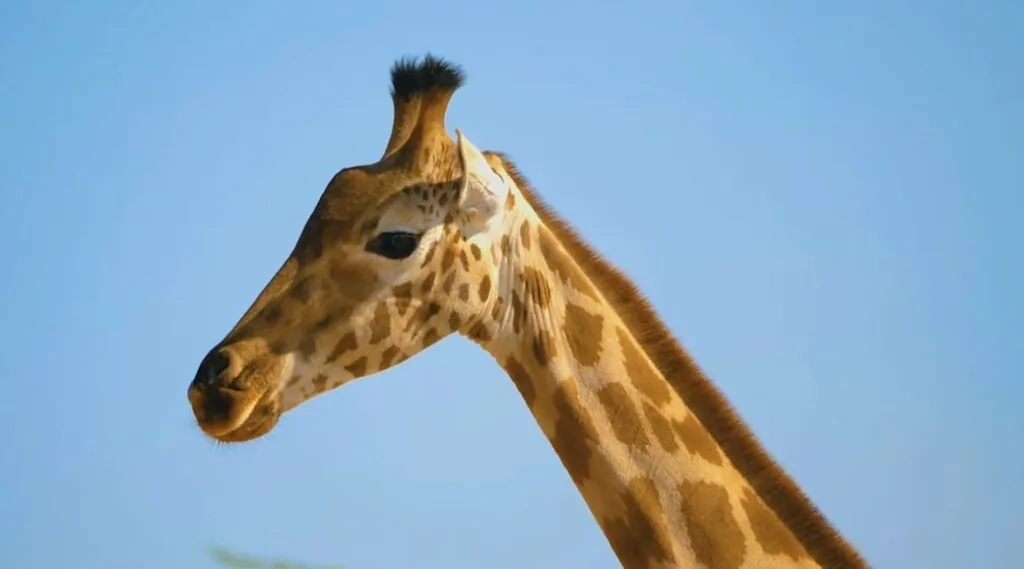
While the giraffe habitat captures headlines, the appearance it inhabits holds a trove of captivating narratives waiting to be explored.
Physical Characteristics
Sexual Dimorphism
Males are relatively larger, reaching up to 19 feet tall and weighing 3,500 pounds (1,588 kg). Females are smaller, with the height of 14 to 18 feet and weight of around 2,500 pounds (1,134 kg).
Giraffe Anatomy
| Color(s) | Light brown with darker brown, polygonal patches |
| Tongue | Black, prehensile, and up to 2 feet long |
| Mouth | Wide and mobile, with prehensile lips |
| Jaw | Powerful, can open up to 2 feet wide to reach high foliage |
| Teeth | 32 incisors and canines at the front for browsing, no molars |
| Nose | Large and dark, with a prehensile upper lip for manipulating leaves |
| Feet | Two-toed with hooves, adapted for walking on hard ground |
| Skeleton | Strong and lightweight, with 7 long neck vertebrae |
Reproduction and Life Cycles
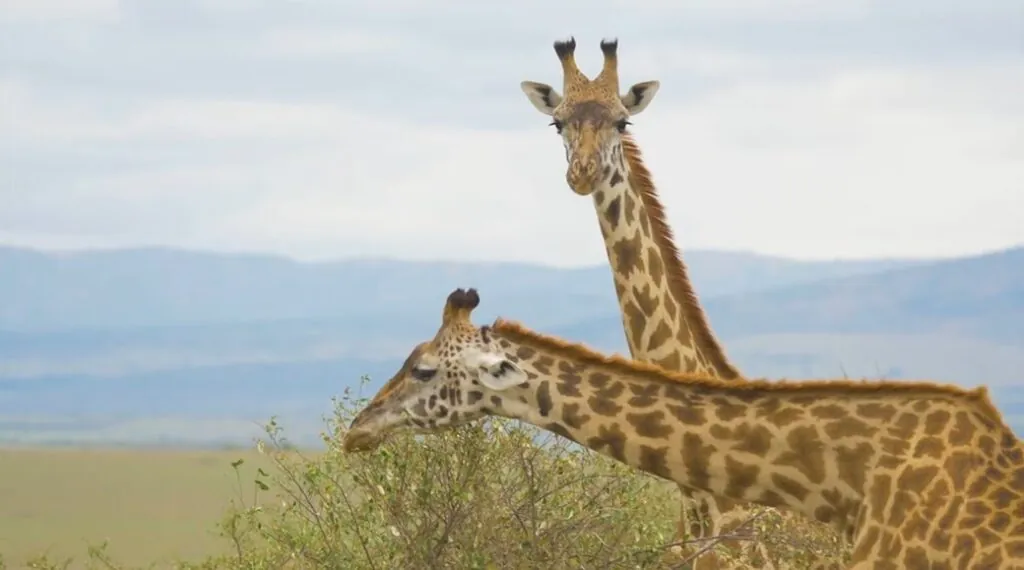
Even as giraffe habitat captures our fascination, their reproduction and life cycles are brimming with equally intriguing tales yet to be told.
Mating System
When it comes to the giraffe mating system, they’re polygamous where males mate with multiple females within their range. While females may construct temporary bonds with single male, they can mate with others.
Reproductive Biology
Giraffe’s breeding season is not defined by strict months. Female giraffes showcase estrous cycles throughout the year. Notwithstanding their size, female giraffes are the sole caregivers. Mothers nurse their young for up to 15 months. Females normally give birth to one calf at a time.
Gestation Period
Analogous to human pregnancies, giraffes carry their young for an average of 14 to 15 months. It ensures that the calves are well-developed before birth.
Life Cycle Stages
Lifespan
In conjunction with the giraffe’s lifespan, they live for around 20 to 25 years in the wild. Nonetheless, individuals in captivity can reach up to 30 years with proper care.
Mating Habits
| Mating Behavior Polygamous | |
| Reproduction Season Year-round, but peaks during rainy season when food is abundant | |
| Litter Size One calf at a time | |
| Gestation Period Approximately 460 days (one of the longest in any land mammal) | |
| Baby Carrying The calf develops inside the mother’s womb | |
| Independent Age Around 4-5 years old |
Diet and Lifestyle
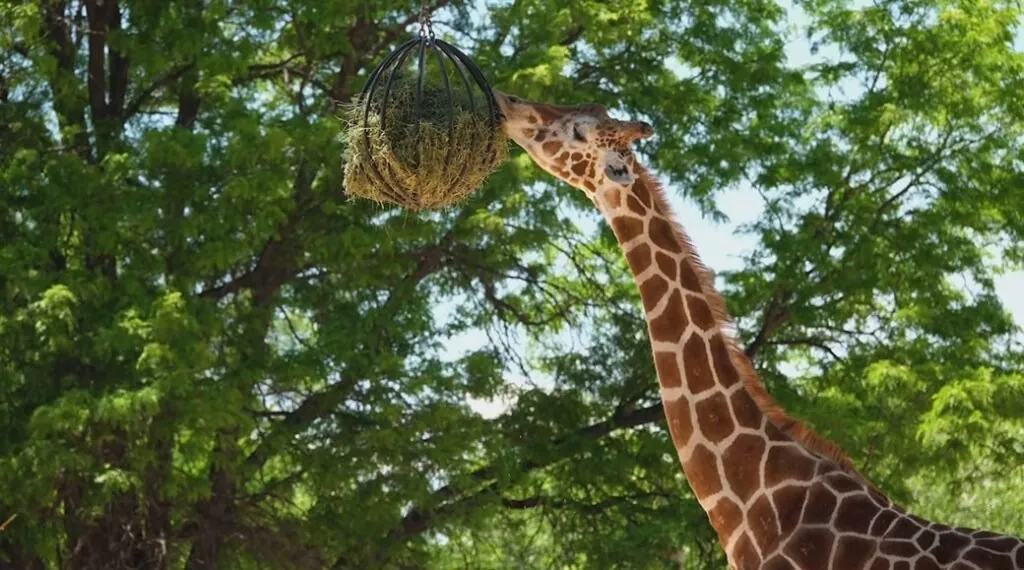
Though giraffe habitat may command attention, their diet harbors a wealth of enthralling secrets, waiting to be revealed.
Feeding Ecology
Speaking of the giraffe diet, they’re herbivores, that is, they are primary consumers, feeding on vegetation. Their long necks and prehensile tongues provide them access to leaves, particularly acacia leaves – their chief food source.
Foraging Strategies
They use employ their long necks and prehensile tongues to browse leaves from trees and shrubs. Built upon nutrients, they opt for specific leaves, avoiding thorny parts with their dexterous tongues. To locate sufficient food and water, they may travel longer distances during dry seasons.
Diurnal Activity Patterns
Giraffes are primarily diurnal, implying they’re most active during daytime. They spend up to 12 hours browsing and grazing. In the course of the hottest part of the day, they rest under the shade of trees to conserve energy.
Social Structure
Albeit not forming strong bonds, they live in fission-fusion societies, where individuals move in and out of fluid groups. Females and their young oftentimes form temporary groups for social interaction and protection.
Threats and Conservation
Despite the alluring nature of giraffe habitat stealing the show, their conservation status entails our attention.
Conservation Status
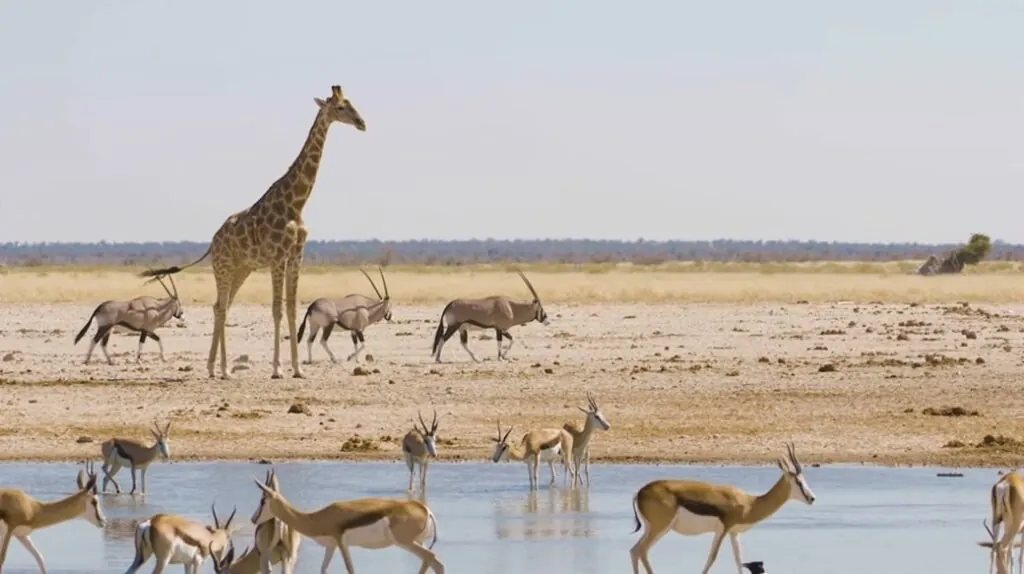
The giraffe’s conservation status, as per IUCN, varies depending on the subspecies. Let’s dig deep into their conservation’s statuses.
Primary Threats
The giraffe is contemporarily encountering numerous threats, including habitat loss and fragmentation, poaching, livestock grazing in some areas, civil unrest and political instability and climate change.
Relationship with Humans
Cultural Significance and Symbolism
In many African cultures, the giraffe is an emblem of wisdom knowledge and foresight due to its ability to see over stretched distances. Egyptians considered giraffes as divine creatures, linking them with Ra – the sun god and Hathor – the goddess of love and music. In addition, some West African myths regard them it a symbol of creation. On the related note, got the scoop of World Giraffe Day?
Media and Entertainment
In the realm of art, these species have made their conspicuous presence in multiple genres:
Unique Characteristics
Forge a path through an intriguing journey as we unfold fascinating facts about giraffes – truly captivating animals that start with G. Join us in shedding light on their remarkable rundown!
| Common Name | Giraffe |
| Other Name(s) | Gerenuk (females), Camelopard (historical) |
| Number of Species | 1 (recently debated, potentially up to 9) |
| Population Size | Approximately 110,000 |
| Lifespan | 20-25 years |
| Weight | 2,500-4,300 kg (males), 1,800-2,800 kg (females) |
| Length | 4.3-5.5 m (males), 3.7-4.3 m (females) |
| Top Speed | Up to 55 km/h (34 mph) |
| Predators | Lions, leopards, hyenas, crocodiles (calves) |
| Most Distinctive Feature | Extremely long neck |
FAQs
